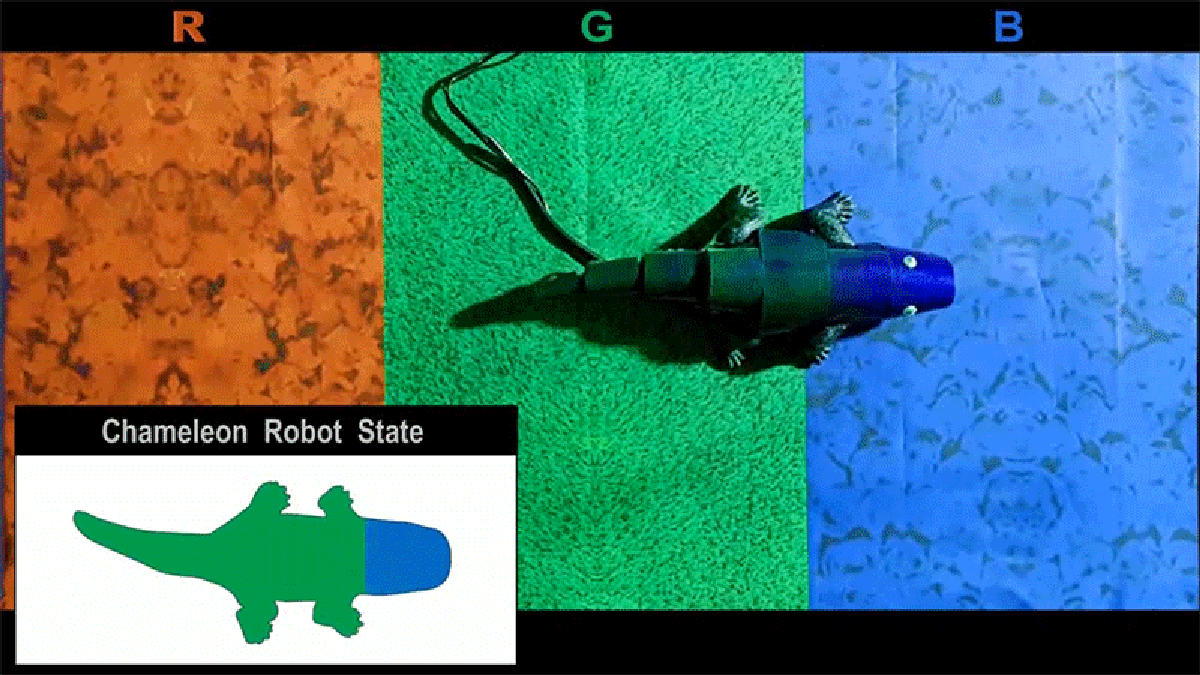
The robo-chameleon can’t perform its color-changing tricks as quickly as a real chameleon can. It takes about a half-second for its artificial skin to match what it’s walking on, but the researchers believe response times could be improved with the addition of cooling mechanisms to help the silver nanowires and the liquid crystals change their temperature much faster. The robot also can’t match the fine details of its surroundings like a real chameleon is able to, but the researchers have taken into account the varying textures that appear in nature by creating several different patterns the robot can apply to its outer layer—dots, stripes, etc.—that help the color-changing skin look more natural and better match what’s around it.
Advertisement
There’s not a whole lot of practical uses for a slow-moving robot chameleon, but the research behind it certainly has some interesting potential. The militaries of the world have long been trying to recreate Mother Nature’s camouflaging tricks, and this new research could finally provide a way for military vehicles, and even the uniforms worn by soldiers, to adapt to the color and pattern of the terrain around them. But it could be applied to regular old cars too, so in the summer a lighter shade would better reflect the sun and heat, while in the winter darker shades could capture the heat to help keep everyone warm inside.